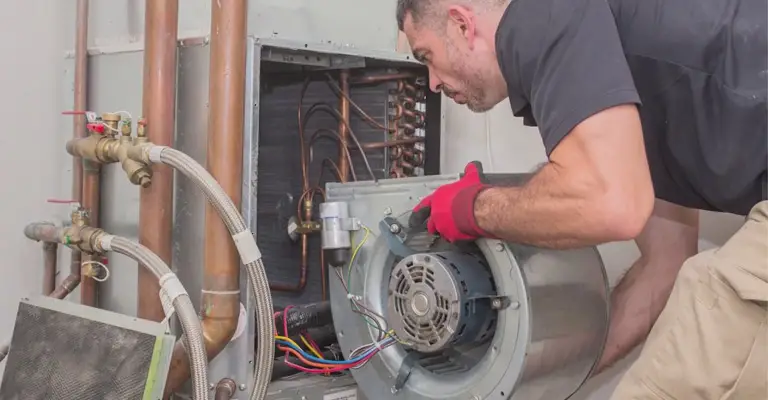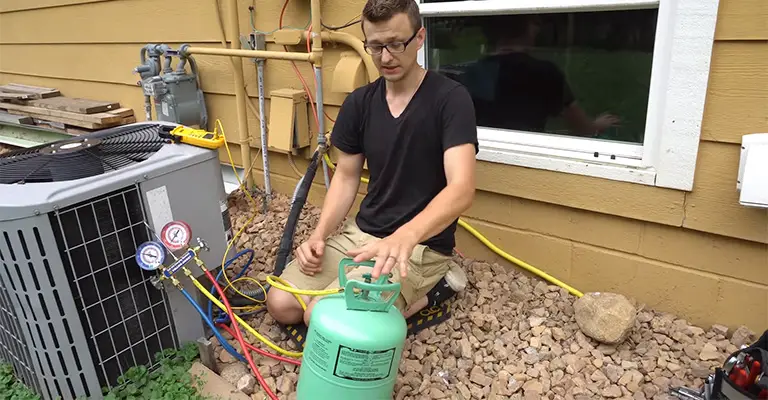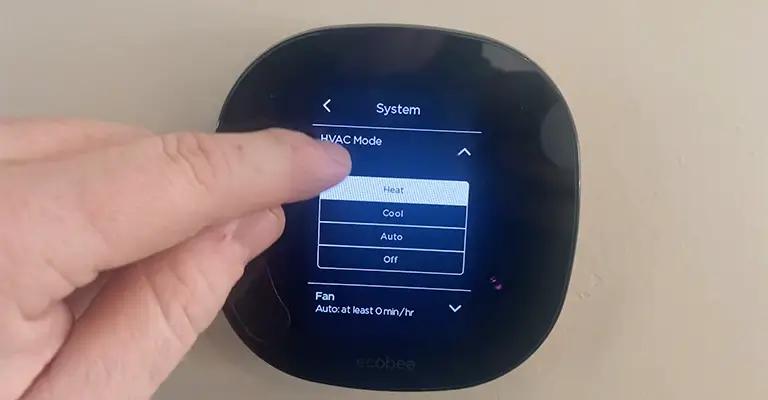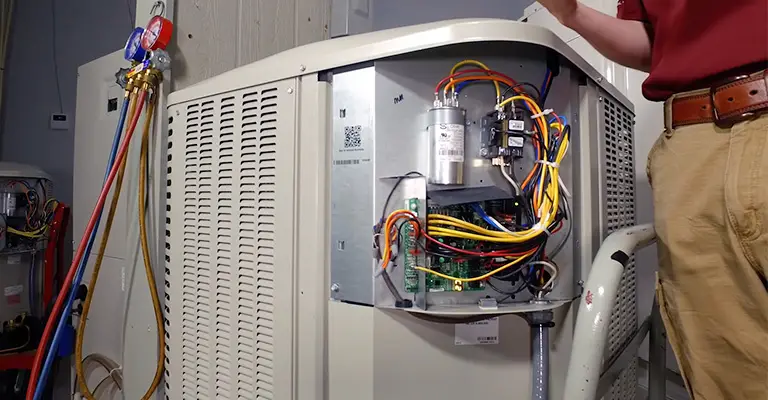When it comes to maintaining a comfortable and energy-efficient indoor environment, having an effective cooling system is paramount. One technology that has gained popularity in recent years is two-stage cooling.
This advanced cooling method provides improved efficiency, better temperature control, and enhanced comfort compared to traditional single-stage systems.
If you’re wondering whether your cooling system employs two-stage cooling, you’ve come to the right place.
Determining whether you have a 2-stage cooling system involves checking the wiring configuration. In a 2-stage conventional heating setup, you’ll typically find wires leading into the W1 and W2 terminals.
For a 3-stage conventional heating system, additional wires may extend into a W3 terminal.
By identifying the specific terminals and the number of wires connected to them, you can ascertain the number of stages in your cooling system.
This article will explore the concept of two-stage cooling, its benefits, and ways to identify if your system utilizes this innovative technology.
How Do I Know If I Have a Single Stage or Multistage Heating System?
Determining whether you have a two-stage cooling system can be done through a few different methods.
- Firstly, check your thermostat. If it has multiple cooling settings, such as “high” and “low” or “stage 1” and “stage 2,” it is likely indicating the presence of a two-stage cooling system.
- Additionally, observe your outdoor unit. It is likely a two-stage system if it appears larger than usual and has two compressors or two fans.
- Another way to identify two-stage cooling is by listening to your system’s operation. If you notice that the unit runs at a lower speed for extended periods before ramping up to a higher speed, it indicates a two-stage system.
Before we dive into the details, it’s important to understand the fundamental difference between single-stage and two-stage cooling systems.
Single-stage systems operate on a simple principle: they run at a fixed capacity, typically operating at full power whenever cooling is required.
In contrast, two-stage cooling systems have two levels of cooling output, providing greater flexibility and efficiency in maintaining the desired indoor temperature.

In order to determine whether your 24v HVAC system is compatible with a smart thermostat, you need to determine whether it is a single-stage or multistage unit.
Multistage heating systems have two temperature speed settings, low and high, as opposed to single-stage heating systems.
A multistage heating system can heat a room faster and prevent major temperature fluctuations in colder climates. The first stage of a two-stage furnace meets standard heating demands.
In the second stage, the furnace kicks into action when the temperature drops. A multistage heating system can be distinguished from a single-stage heating system by a few factors.
The Best Way To Describe Single-Stage Systems Is As “On-Off” Systems
Either they are blowing hot (or cold) air at full force, or they are not working at all. Most single-stage HVAC systems are older models or are found in smaller homes or in milder climates.
There Are Usually Two Steps In Multistage Systems, Such As “Low” And “High”
There might be three stages in a 3-stage system: “low”, “medium”, and “high”. Their output is granular, just like a hair dryer or a ceiling fan.
Frequently, multistage systems are found in large and newer homes or regions where the weather is extremely cold or hot.
It is also generally more energy-efficient to use multistage systems. Although running the house at full blast might get the temperature up faster, you can usually save more energy by gradually raising it.
There is no need to micromanage which stage is currently being used with smart thermostats – they determine this for you.
You may see designations such as “2H/2C” when researching smart thermostats. In other words, this shorthand means the thermostat can heat and cool at two different stages at the same time. You don’t have to have more than one stage of heating or cooling.
Other Ways To Tell If Your HVAC System Is Multistage Heating Or Cooling

Looking at the wires on your current thermostat is the best way to determine whether you have multistage heating or cooling.
To determine whether your smart thermostat will work with your HVAC equipment, you’ll need to examine your wires, so you might as well become familiar with them.
Look at the wires leading into your current thermostat’s terminals, especially the W, W1, Y, and Y1 terminals.
Identifying A Single-Stage System
- As a single-stage conventional system, only one wire is used for heating (in the W or W1 connector), and one wire is used for cooling (in the Y or Y1 connector).
- For both heating and cooling, a single wire will be connected to the Y1 terminal on a single-stage heat pump.
Identifying A Multistage System
There are multiple heating wires and/or cooling wires in multistage systems. A heating wire is typically inserted into a terminal labelled “W”, while a cooling wire is typically inserted into a terminal labelled “Y”.
- The W1 and W2 terminals will be connected to the wires for conventional 2-stage heating
- In 3-stage conventional heating, wires will lead to terminals W1, W2, and W3
- Wires leading into Y1 and Y2 terminals will be used for conventional 2-stage cooling
In some HVAC systems, a heat pump is the primary heat source until the outside temperature becomes too cold for it to function on its own. The W2 or the AUX terminal is connected to the AUX heat in these systems.
What If There Are Two Sets Of Labels?
There are sometimes two labels for a thermostat’s terminals – one for a “conventional” system and another for a heat pump system.
Which Smart Thermostats Work With Multistage Heating And Cooling Systems?

In a nutshell, they all do. Most smart thermostats available today support up to two heating and cooling stages.
Depending on the type of HVAC system, the number of stages is also different. Smart thermostats can support multiple stages if your system has a heat pump.
How Do I Know If the 2nd Stage Is Working?
To determine if the second stage of your cooling system is working, you can follow these steps:
Check The Thermostat
If your thermostat has separate indicators for each cooling stage, observe whether the second stage is activating when the temperature rises. You may see a different symbol or a change in the display when the second stage is running.
Observe The Cooling Cycles
Pay attention to how your cooling system operates during a hot day. A two-stage system typically starts in the first stage, running at a lower capacity to maintain a comfortable temperature.
As the demand for cooling increases, the system should transition to the second stage, running at a higher capacity to provide additional cooling power.
If you notice a significant increase in airflow or a more intense cooling effect during high-demand periods, it suggests that the second stage is functioning properly.
Listen For Changes In Sound
Two-stage cooling systems often produce different sound levels depending on the stage in operation.
The second stage typically generates a louder sound due to the increased airflow and higher fan speed. Listen for any changes in the noise level or an audible shift when the system switches to the second stage.
Monitor Energy Consumption
A properly functioning two-stage cooling system should demonstrate energy efficiency.
If you notice that your system is effectively cooling your home while consuming less energy compared to a single-stage system, it indicates that the second stage is functioning correctly.
If you have followed these steps and still have doubts about the performance of the second stage, it is advisable to contact a professional HVAC technician.
They will have the expertise and tools necessary to evaluate your system and ensure both stages are operating optimally.
The Bottom Line
Check the number of wires that lead into different terminals of the thermostat to determine whether you have a single-stage or multistage system.
Multiple-stage systems have many wires to the thermostat, whereas single-stage systems have no more than two.








